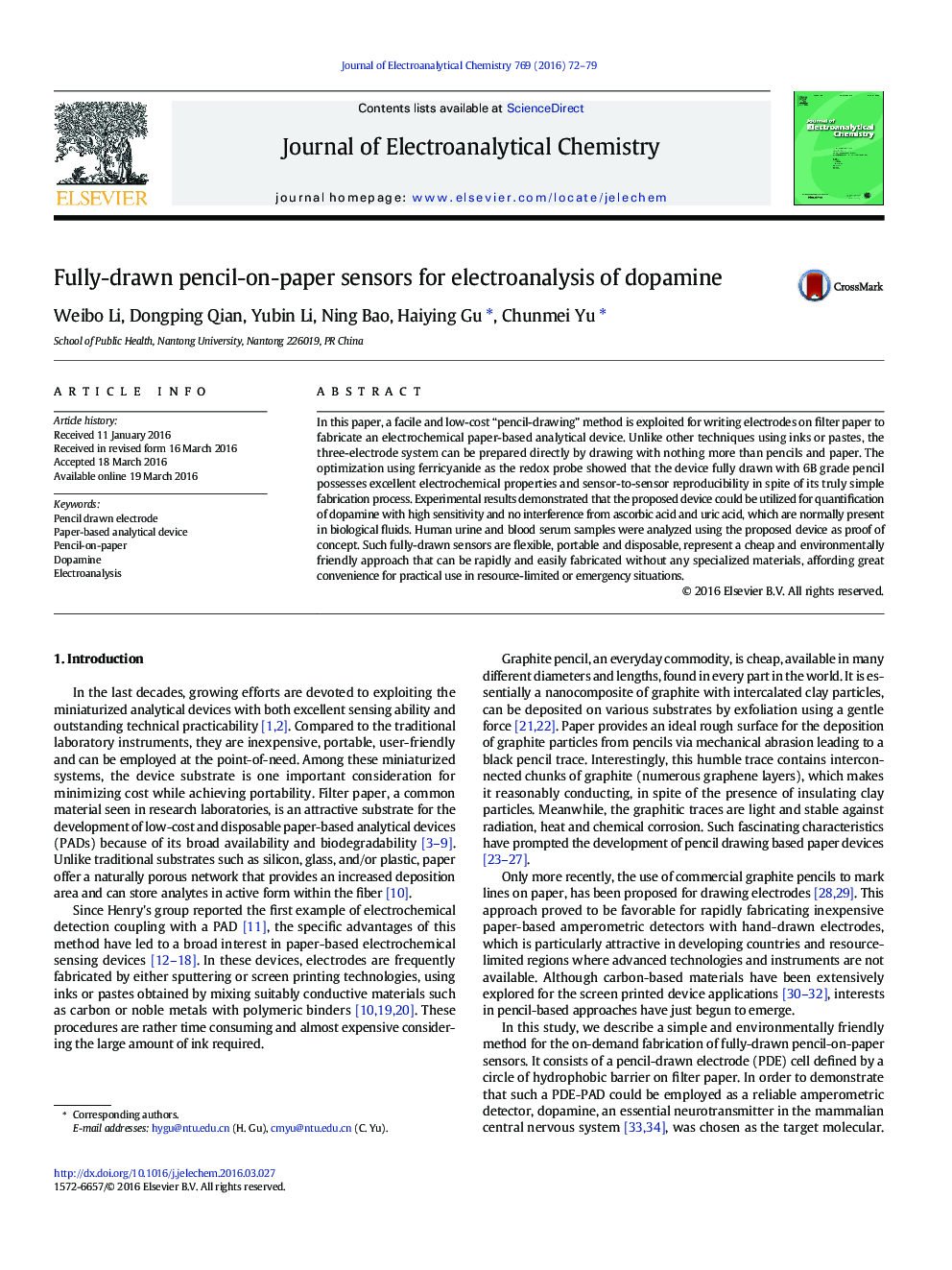| Article ID | Journal | Published Year | Pages | File Type |
|---|---|---|---|---|
| 217949 | Journal of Electroanalytical Chemistry | 2016 | 8 Pages |
•Three-electrode system was written on the filter paper with graphite pencils.•Fully-drawn pencil-on-paper sensors were easily fabricated.•The proposed devices were applied for the electroanalysis of dopamine.•This approach is extremely simple, low-cost and environmentally friendly.
In this paper, a facile and low-cost “pencil-drawing” method is exploited for writing electrodes on filter paper to fabricate an electrochemical paper-based analytical device. Unlike other techniques using inks or pastes, the three-electrode system can be prepared directly by drawing with nothing more than pencils and paper. The optimization using ferricyanide as the redox probe showed that the device fully drawn with 6B grade pencil possesses excellent electrochemical properties and sensor-to-sensor reproducibility in spite of its truly simple fabrication process. Experimental results demonstrated that the proposed device could be utilized for quantification of dopamine with high sensitivity and no interference from ascorbic acid and uric acid, which are normally present in biological fluids. Human urine and blood serum samples were analyzed using the proposed device as proof of concept. Such fully-drawn sensors are flexible, portable and disposable, represent a cheap and environmentally friendly approach that can be rapidly and easily fabricated without any specialized materials, affording great convenience for practical use in resource-limited or emergency situations.
Graphical abstractA “pencil-drawing” method is used to write electrodes on paper to fabricate an electrochemical paper-based analytical device, which is applied for dopamine detection.Figure optionsDownload full-size imageDownload as PowerPoint slide
